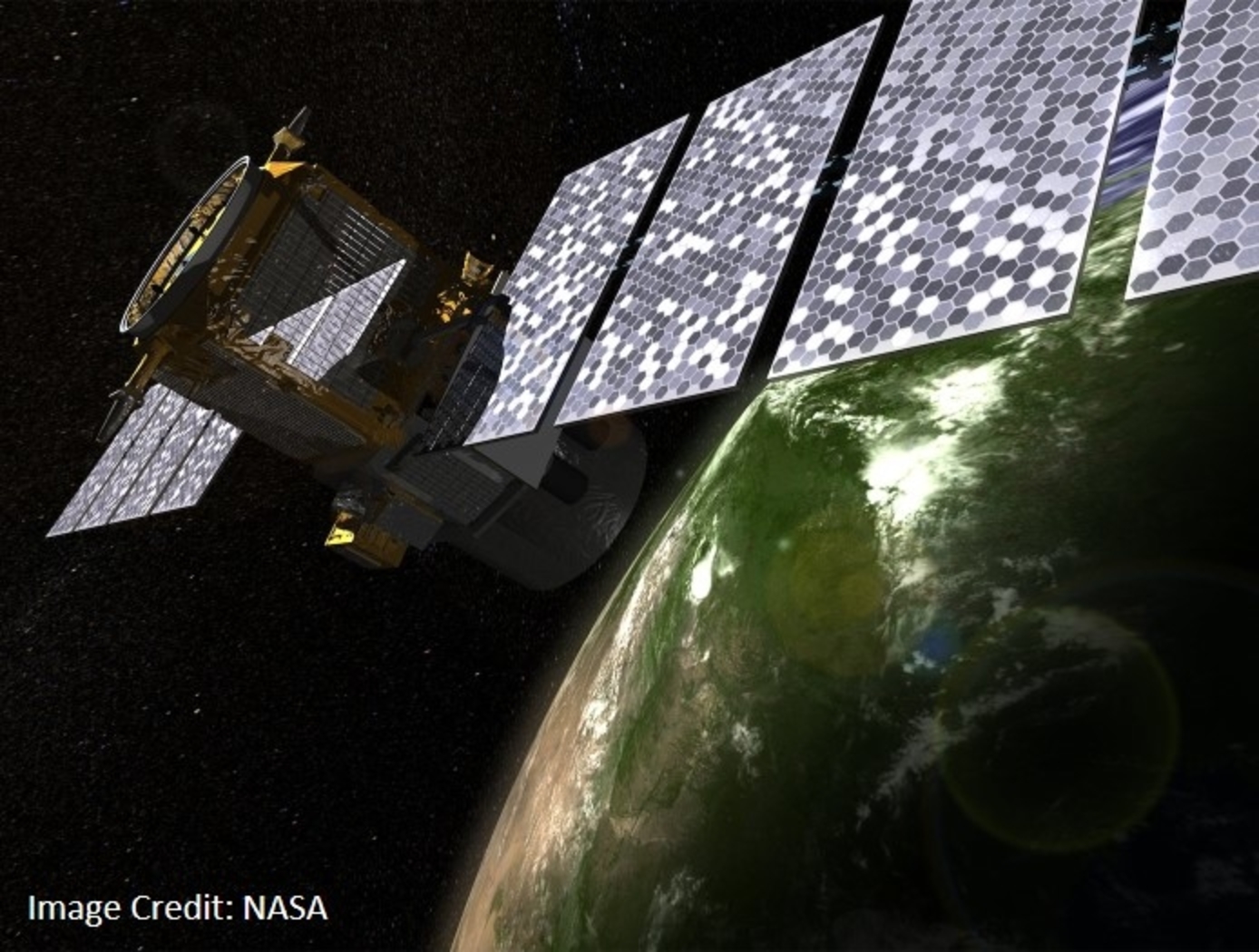Search
sensors

Pulsed 2-Micron Laser Transmitter
The new NASA LaRC Pulsed 2-Micron Laser Transmitter for Coherent 3-D Doppler Wind Lidar Systems is an innovative concept and architecture based on a Tm:Fiber laser end-pumped Ho:YAG laser transmitter. This transmitter meets the requirements for space-based coherent Doppler wind lidar while reducing the mission failure risks. A key advantage of this YAG based transmitter technology includes the fact that the design is based on mature and low-risk space-qualified YAG host crystal. The transmitter operates at a 2096 nm wavelength using Ho:YAG, resulting in high atmospheric transmission (>99%), versus a transmitter operating at 2053 nm using co- doped Tm:Ho:LuLiF, which suffers limited transmission (90%) due to water vapor interference. In-band pumping through Tm:Fiber pump Ho:YAG architecture offers lower quantum defect from 1908 to 2096 nm (9.1%) compared to traditionally used co-doped Tm:Ho:LuLiF of 792 to 2051 nm (61%). The transmitter has an efficient pump compared to LuLF, since YAG has 27% higher pump absorption and 52% lower reabsorption of the emitted 2-micron, resulting in higher efficiency and lower heat load. Being isotropic, YAG is amenable for spatial-hole burning mitigation which supports linear cavity architecture without compromising injection seeding quality. This attribute is important in designing a compact, stable, high seeding efficiency laser. A folded linear cavity for long pulse (>200 ns), transform limited line-width (2.2 MHz) and high beam quality (M2 = 1.04) - the most critical parameters for coherent detection - are easier to achieve using YAG compared to LuLF. Lower heat load results in high repetition rate (>300 Hz) operation, which allows higher probability of wind measurements through broken clouds, off clouds, and below clouds, thus reducing errors and increasing science data product quantity and quality.
sensors

More Reliable Doppler Lidar for Autonomous Navigation
The NDL uses homodyne detection to obtain changes in signal frequency caused by a target of interest. Frequency associated with each segment of the modulated waveform collected by the instrument is positive or negative, depending on the relative range and direction of motion between the NDL and the target. Homodyne detection offers a direct measurement of signal frequency changes however only the absolute values of the frequencies are measured, therefore additional information is necessary to determine positive or negative sign of the detected frequencies. The three segmented waveform, as opposed to conventional two-segmented ones, allows for resolving the frequency sign ambiguity. In a practical system, there are times when one or more of the three frequencies are not available during a measurement. For these cases, knowledge of the relative positions of the frequency sideband components is used to predict direction of the Doppler shift and sign, and thus make correct range and velocity measurements. This algorithm provides estimates to the sign of the intermediate frequencies. The instrument operates continuously in real time, producing independent range and velocity measurements by each line of sight used to take the measurement. In case of loss of one of the three frequencies, past measurements of range and velocity are used by the algorithm to provide estimates of the expected new range and velocity measurement. These estimates are obtained by applying an estimation filter to past measurements. These estimates are used during signal loss to reduce uncertainty in the sign of the frequencies measured once signals are re-established, and never to replace value of a measurement.
Sensors

Receiver for Long-distance, Low-backscatter LiDAR
The NASA receiver is specifically designed for use in coherent LiDAR systems that leverage high-energy (i.e., > 1mJ) fiber laser transmitters. Within the receiver, an outgoing laser pulse from the high-energy laser transmitter is precisely manipulated using robust dielectric and coated optics including mirrors, waveplates, a beamsplitter, and a beam expander. These components appropriately condition and direct the high-energy light out of the instrument to the atmosphere for measurement. Lower energy atmospheric backscatter that returns to the system is captured, manipulated, and directed using several of the previously noted high-energy compatible bulk optics. The beam splitter redirects the return signal to mirrors and a waveplate ahead of a mode-matching component that couples the signal to a fiber optic cable that is routed to a 50/50 coupler photodetector. The receiver’s hybrid optic design capitalizes on the advantages of both high-energy bulk optics and fiber optics, resulting in order-of-magnitude enhancement in performance, enhanced functionality, and increased flexibility that make it ideal for long-distance or low-backscatter LiDAR applications.
The related patent is now available to license. Please note that NASA does not manufacturer products itself for commercial sale.



